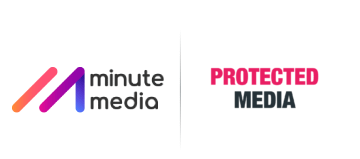It’s no secret that Google and Facebook found themselves in hot water when they started employing automated advertising targeted ads next to offensive content.
In one particular example, Vodafone, a British telecommunications company, declared this past summer that it will prevent its advertising from appearing next to alleged “fake news” stories and hate speech. The company claimed there is now a risk of its brand taking damage if it’s marketed in outlets that are “fundamentally at odds with [its] values and beliefs.” Vodafone clearly made this decision because of the growing concern that by advertising on these sites it was inadvertently funding disreputable organizations.
British Labour Party politician David Winnick referred to the amount of money made by ads next to provocative content as “commercial prostitution.”
To assure advertisers that they are doing what they can to protect their brands, both Facebook and Google claim they are taking extra measures to prevent ads from appearing in apps or sites containing content that is illegal, misleading or deceptive, including fake news. But it’s not clear that they can protect brands or that they should.
It’s A Matter Of Taste
Ads are served through digital auctions based on a viewer’s browsing patterns, purchase history, age, economic status, values, personality, attitudes, opinions and lifestyles. The user experience for online advertising is totally unique and individual for each person.
If a viewer sees an ad for a truck while browsing through sites that contain news items that are misleading, the ad was served more often on that site because of the viewer’s background or previous searches. So does it really make sense to complain about where the ad appeared? After all, the consumer chose to go to that site in the first place.
Since every screen can become a canvas, in the privacy of a consumer’s home, it doesn’t make sense to dictate what each individual viewer sees. There can be no real connection between the brand and the individual computer screen.
Brands may appear to endorse political positions or rhetoric that potential customers may find objectionable, by having their ads only appear on certain sites. But, typically, what makes content objectionable is a matter of opinion. It can depend on which side you’re on, and how a news item is interpreted or reported.
As people become more polarized and opinionated over controversial issues — for example, the issue of immigration or whether marijuana should be legalized — it’s difficult for brands to know when opinions or news items are extreme, fabricated or just considered offensive by certain viewers.
In addition, it can be fairly easy to build a filter for pornography or violence, but it’s much more difficult to detect fake news, exaggerations or news items that look fake. In many cases, a site can include some real information and some stories that some would consider fake news. It would require specialized knowledge and having humans check each ad impression one by one, which would be incredibly difficult to scale up when typical online ad campaigns can include millions of impressions.
Can Brands Be Protected?
One way to scale up and detect these sites with any level of precision is to create a ranking system and then use an algorithm to scan multiple sites to determine if they are considered acceptable or unacceptable. It’s also possible to use standard industry blacklists to weed out those sites that are considered extreme and then add sites one by one as they are detected. The flip side is also true. For example, in the case of Vodafone, its media agent, WPP, created a whitelist of acceptable sites.
But most likely, these methods won’t be successful, and there won’t be any across-the-board solutions either.
But there are too many variables to stop ads from appearing next to fake news. Furthermore, the exact placement of an ad is based on calculations performed in milliseconds, and while it may have controversial content for that particular day, a different ad might appear next to the same news story 24 hours later.
The ads that appear on sites are a sum of viewers’ previous choices and personal tastes. As long as the viewers of the ads don’t complain, it really shouldn’t be promoted as a serious problem. Advertisers and ad servers shouldn’t be forced to handpick sites to be blacklisted to prevent some consumers from being offended. Instead, the market should be educated about the personal experience of ad serving and then accept that individuals have a right to view ads wherever and whenever they choose.




